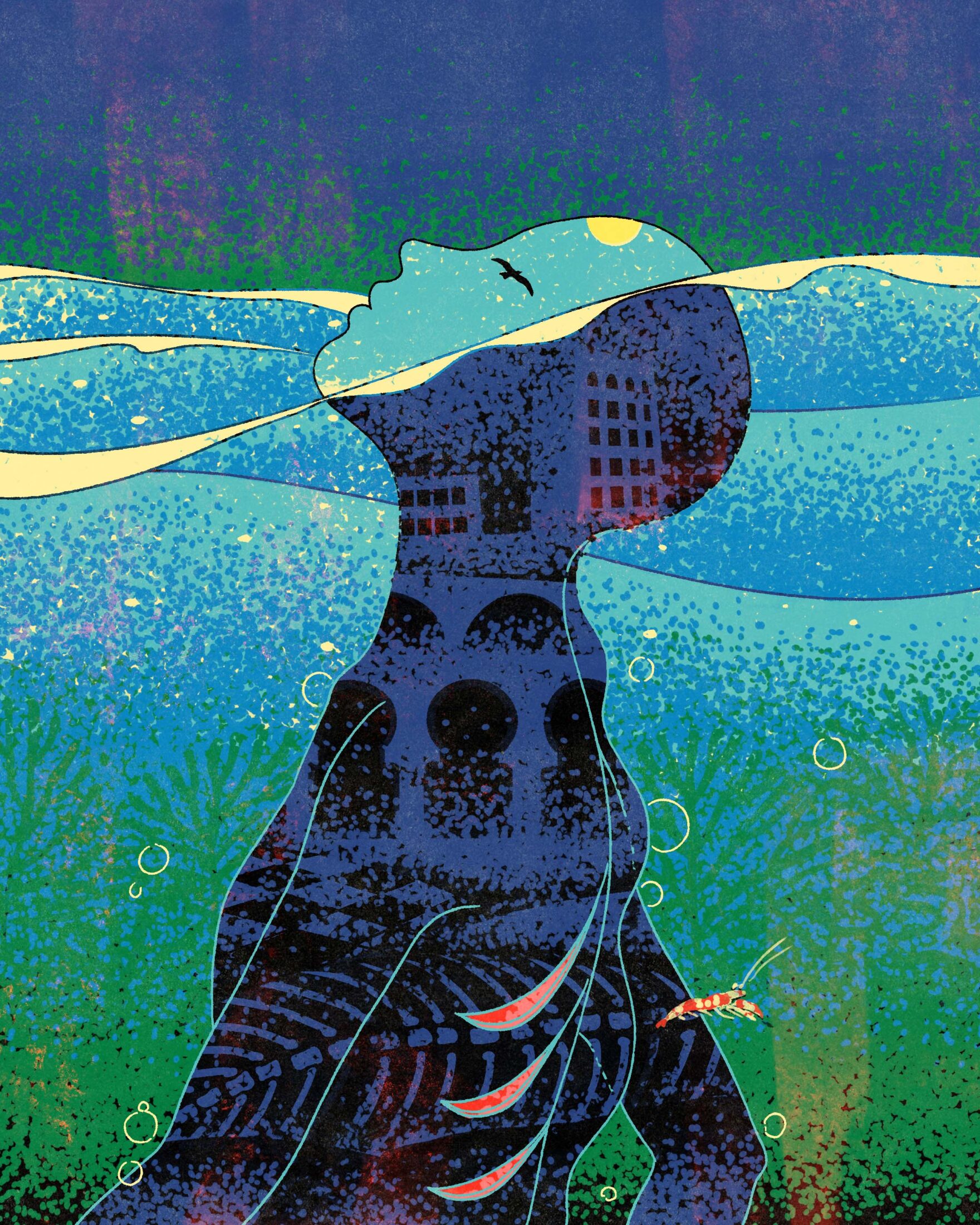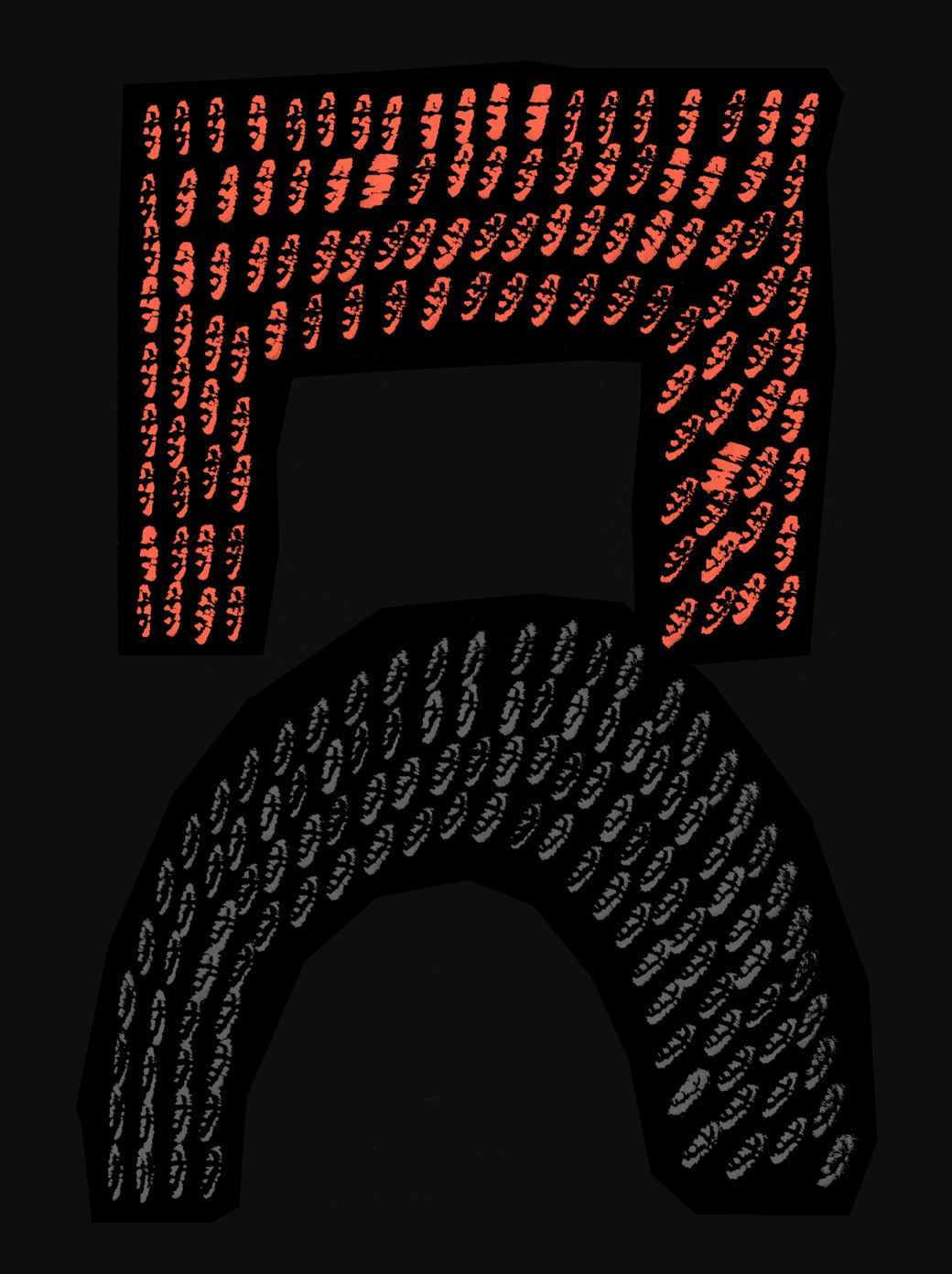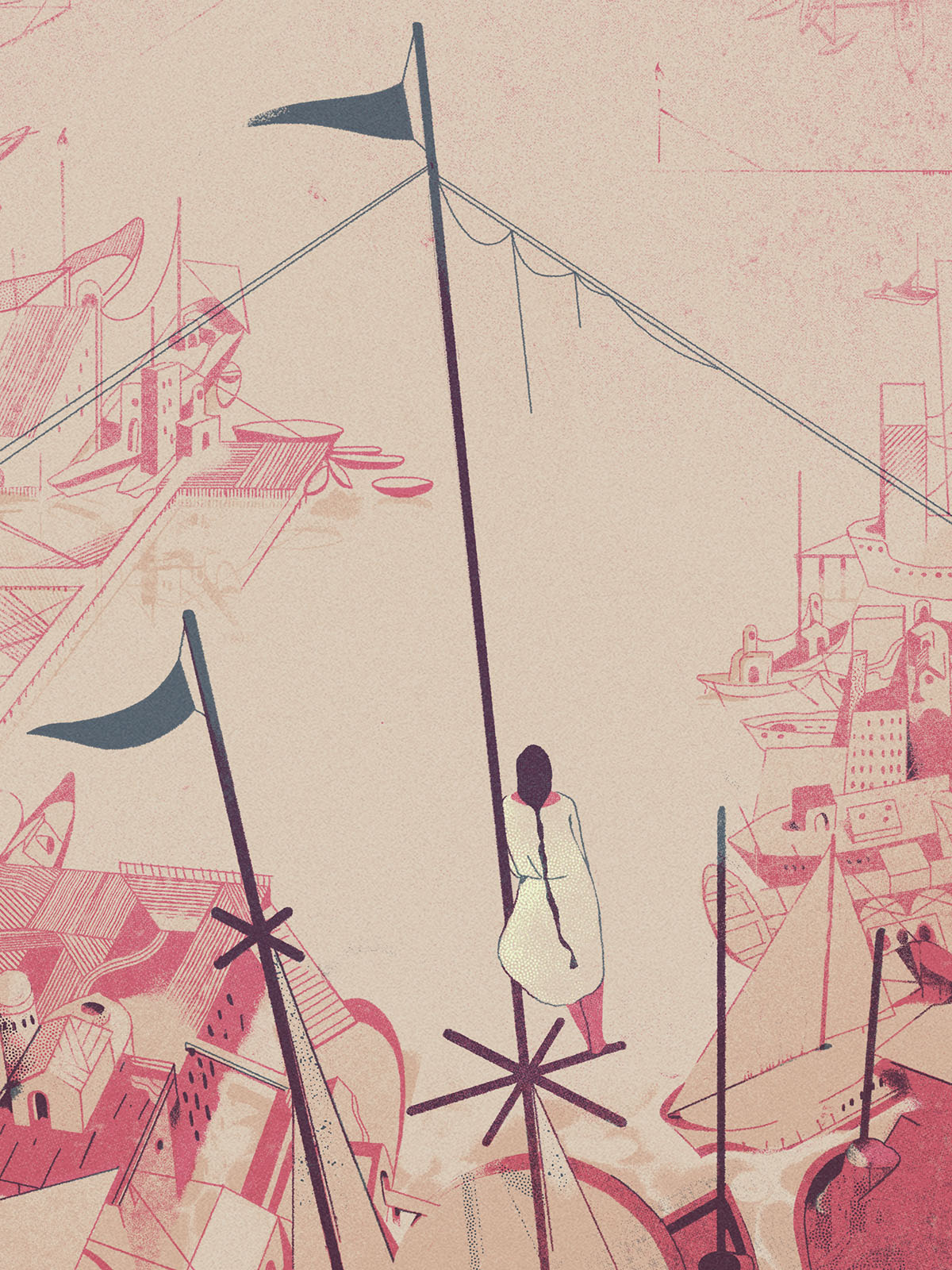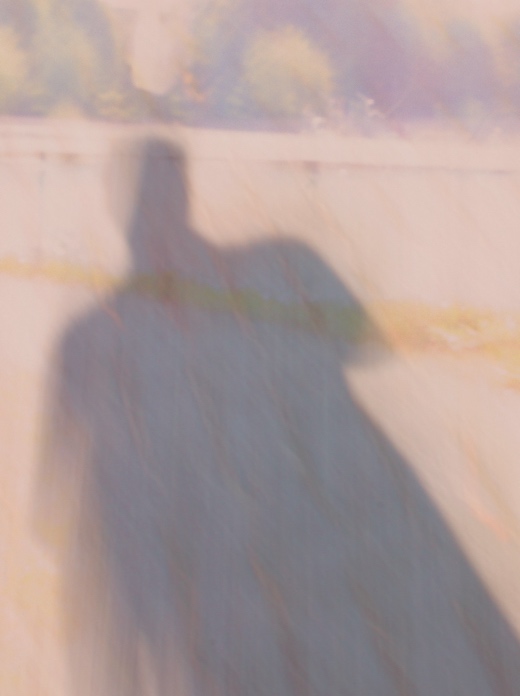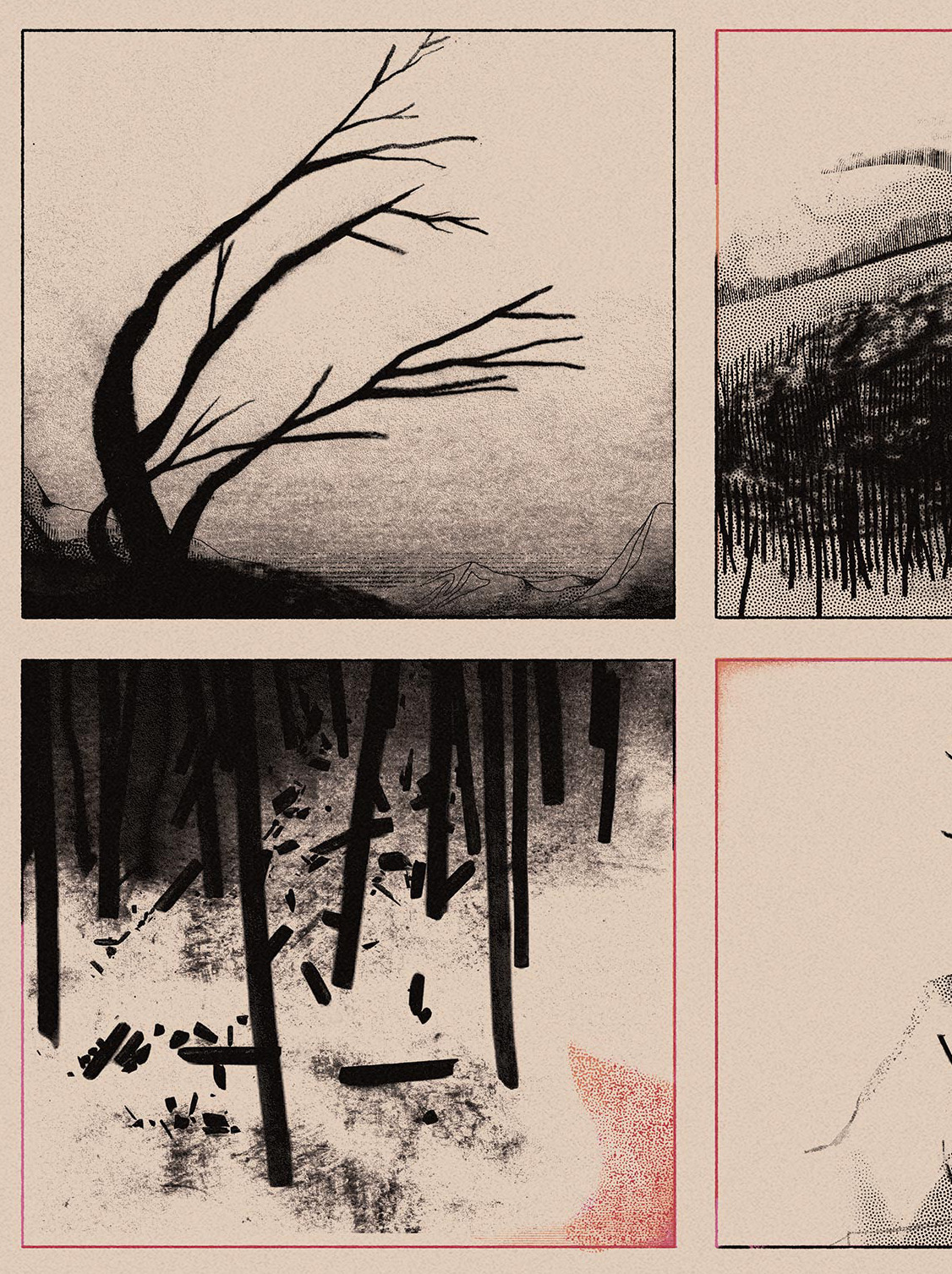
Daisy Hildyard is an English novelist and essayist with a PhD in the history of science. She is the author of two novels, Hunters in the Snow, winner of the Somerset Maugham Award and a ‘5 under 35’ honorarium from the USA National Book Awards, and Emergency, winner of the RSL Encore Award; as well as the essay collection, The Second Body. Her work has appeared in The New Yorker and Granta, and she has written book reviews for The New York Review of Books and The Times Literary Supplement. Daisy lives with her family in North Yorkshire, where she was born.
Colin Salmon is an English actor known for his roles in three James Bond films and the BBC series Doctor Who and EastEnders. As a voice actor, Colin has narrated numerous audio books, documentaries, short films, and other media.
Muhammad Fatchurofi is an artist and illustrator based in Semarang, Indonesia, whose contemplative subjects reflect his quest to understand the inner world. Muhammad’s artwork has been exhibited internationally, in Japan, Indonesia, France, and Italy; and his editorial illustrations have appeared in The New York Times and Vox, among others.
1. Prehistory
Eons ago, before the seas had retreated, a lightweight black rock was travelling through space. It breached a new planet’s atmosphere and caught fire, then fell to earth in the ocean on the site of Scarborough Bay.
There was no life in the bay back then. The meteor leaked particles into the warm, soupy ocean. Life began there, in the warm pressurized vents where minerals were forced to mix, which formed the cradle. Time and water passed in great volumes.
O
A hundred million years ago, or so, the last great ichthyosaur hunted a giant squid through the water. The squid’s translucent form disguised her and she slipped backwards, swimming right above her pursuer. The ichthyosaur was no longer young; when she lost her prey her huge body curved to slow down, and she ran into a strange dark, porous boulder, which stuck out from the pale sandstone bedrock. The ichthyosaur recoiled from the collision and hung in the water in pain, her back oddly arched where the spine had slammed into the rock. She was hungry and weakened now. There was no other life in the warm water around her. Then, gradually, in the corners of her vision, something moved. Some strange material was emitting itself from the dark boulder below. The shrimp—hundreds of them—poured out of crevices and loose holes in the rock in a steady stream, like rain falling upward. They made a snapping sound that travelled through the water to the ichthyosaur’s ears and she turned around and, with her last remaining strength, swam away.
O
Time passed. The seas retreated. Eleven thousand years ago, out in the middle of Lake Flixendale, a group of men, women, and children stood on a large wooden raft. There was a heap of bones that had been laid out on the middle of the raft, carefully arranged in the form of a deer.
A tall woman stood over these bones. She was wearing antlers on her head and a small engraved piece of slate on a lace around her neck. When she issued the order, the people around her pushed the deer skeleton off the edge of the raft and into the water. The woman removed the slate from around her neck, took it off its lace, and lifted it up. She spoke in a low, urgent voice and then, with a starting movement that made the children jump, she threw out the slate across the surface of the lake. It bounced many times, so lightly that it hardly made a splash, then slipped under.
The villagers looked around, as though hopeful that the offering would take immediate effect. The woods that surrounded them were quiet. There were no signs of live deer; no squirrels; no birds in the trees. Then a man cried out and dropped to his knees. He pointed his finger down into the water, and everybody crowded round to look. There were no trout or pike, no crayfish in the soft clear brown water; no water boatmen skating over the surface. But down there, floating over the pebbles, through the pale bones, right there in the fresh water, there was a single, translucent saltwater shrimp.
O
The family came back from Assam for the English summer of 1878, taking rooms at the Grand for the season. Mother retired to her room each afternoon to bathe—there were taps running with saltwater; the seas in Scarborough were said to heal. Father had his business meetings. Maud, a local girl, was paid to take the children to the Aquarium.
Scarborough Aquarium was the largest of its kind, and the Grand Hotel was the biggest brick building in the world. Maud recited these facts to the children—she was proud of her town. She had lived here her whole life. She had never visited the Aquarium before, because of the entrance fee.
The children fell quiet when they walked into the cool columned interior. Tiled walls hand-painted with hawthorn blossom; cloud-shaped doorways; ornate plasterwork on every pillar. The architectural embellishment was not unfamiliar to these children, but not quite right, either—its pastiche Mughal architecture had been brought back from the colonies somehow altered. The children looked at the walls, then at one another, frowning in recognition. ‘Last summer we went to the Himalayan Hotel in Kalimpong,’ the girl informed Maud in her small hard voice. ‘That was much better.’
The little boy leaned down to scratch the beak of a dolphin that was painted on a floor tile. ‘My father found a yeti’s footprints in the snow above the hotel above Kalimpong.’ He made a whistling sound like a bullet. ‘In Assam he hunts tigers.’
In the fernery the light reached them dimly, through the skylight and the tall Dicksonia trees. Then they passed into the aquarium proper. They peered into the glass walls and saw … nothing in the blue water. There were rocks and fake corals, but there were no fish. No eels or crustaceans. No jellyfish. Only seaweed, and it stood unnaturally still.
Maud looked at the children whose faces were blankly unsurprised. She called over the attendant. ‘Where are all the fish?’ She felt flustered, somehow stupid.
The young man shrugged. ‘There’s a swimming competition in the aquarium tomorrow,’ he explained. He winked at the little boy. ‘The fish have been moved into smaller tanks in the back room.’
Maud felt a chill, as though the empty water, this strange dreamlike space, was intimating some submerged, virtual, or future reality.
The boy pulled on her wrist. ‘Can we go to the shooting gallery now?’
‘Wait,’ said Maud. She squinted into the tank’s blue depths and saw a single, small shrimp, drifting out of a crevice in the rock. The shrimp was hardly bigger than Maud’s fingernail, with dark red tiger stripes and two tiny dot eyes that seemed to take her in. It drifted upward and outward, so that the movement of its body described an elegant curving line. Something told her not to tell the others it was there.
O
Many species started acting strangely in the early 2020s. An Arctic walrus arrived in Scarborough Harbour, came up on land and walked through town, flopping through the carpeted arcades and stopping traffic on the sea front—as though he was confused as to the nature or boundaries of his own species.
At around that time the dead tides began to come in. Hundreds of crabs, fish, seals, and shellfish were washed up on the shores for reasons that couldn’t be settled. Fishers and local reporters suggested a connection with chemical dumping to the north of the bay, however, government authorities tested the bodies and declared the area completely safe.
One morning Selina was out chasing her terrier along the beach before work when she noticed some living movement among the drifts of crushed shells. A small, grey, shining object, skipping itself into the air and dropping back onto a patch of exposed sand. Selina approached: a shrimp, stranded above the tideline. She picked it up in her cupped hand and looked closely. A clear grey body with crimson striations. Long whiskers. A tiny black pinprick for an eye. Little thing.
She waded out into the tepid, shallow waves, not caring that her shoes were getting wet, and placed it gently back into the sea.
2. The Great North Eastern Reef
In the late 2020s, a new reef began to form in Scarborough Bay. Brightly coloured coralline and algal life forms appeared, one after another, several miles out to sea. Each had migrated separately, some on the sea currents that had been repatterned by the recent Arctic melts; some on fishing nets from the Mediterranean and the Indian Ocean. The new inhabitants settled and formed a novel colony whose diverse species profile had never before existed as one biome. It thrived in the bay. The sea here had warmed, a little, through the preceding years, and was suddenly heating more rapidly, degree by degree from month to month.
The human population was unaware of the existence of this reef for quite some time. Chemical dumping, and seabed dredging, were common if clandestine practices in the local waters. Unexplained phenomena—dead tides; inconclusive investigations; animals acting strangely—had been occurring in the bay for years. Most recently, gigantism had been reported in marine mammals in the local area. Huge seals and dolphins were spotted from the Marine Drive observatory. A sunfish was sighted by a fishing boat near Flamborough Head. In this environment, when fishermen found coralline matter in their nets, they didn’t think about it all that much; just shrugged and threw it back.
Strange lights criss-crossed the waters at night. Their movements did not correspond to the boats tracked on official shipping channels. A patch of slicked water was assumed, at first, to be a minor leak from an outboard motor, but it grew and grew, until it took on the appearance of a glitch or a portal on the sea’s surface. Small boats would not go near it. When they came close, it was said that the patch emitted a low whirr—the fisherman described it as a mechanical or technological sound. Up close, they said, the slick had a meshed, pixelated appearance, and was as fine and lightweight as floating liquid. In messaging groups and online threads, conspiracy theories of spills and dumping; incidents and catastrophes, abounded. A governmental body mounted an investigation into the phenomenon, but soon concluded with the declaration that the bay was completely safe.
Then one day a tropical cyclone moved from the Atlantic along the English Channel and intensified as it moved up the North Sea coast. As it swept through Scarborough, the waters at the site of the slick became agitated. A mop of squid eggs that had been laid on the sea floor was detached from its anchor. The commotion lifted it to the surface and the cyclone slammed it against sea walls. The eggs scattered.
The force of the storm drove seawater back through the nineteenth-century saltwater piping system, forcing an overflow through the basement of the Grand Hotel. One squid egg was sent in this direction. It was pushed up through local pipes and waterways, surfaced through a storm overflow in the flood drainage fields site of the prehistoric Lake Flixendale, and then washed back underground. It flowed through unrenovated plumbing systems around and beneath the town, then downhill and back to the sea, almost.
On the sea front, in the half-light of an underground car park on the site of the old aquarium, water chuted down a drainpipe, releasing the squid egg into a warm puddle.
The car park teemed with midges and mosquitoes in the humid conditions of the tornado’s aftermath. The squid hatched. Microbes and algae, marine organisms and flying insects, mated and laid; died and hatched. Some days later a novel species—an infinitesimally small aquatic insect, tentacular, with a blinking eyeball—emerged.
The life cycle of this new being was swift. With its wings and its swimming feelers, it could move through airs and waterways, and, generations passing in days, rapidly colonized the town. Anywhere that hosted germs and insects merging, breeding, and hurriedly evolving, became its home. In the nozzles of the spa jacuzzi. In garden ponds and water butts. The new species gathered and mixed with one another in these warm, pressurized niches, as though they had some ancient knowledge that these were the places that would cradle new life.
3. Patient Zero
One June evening, after midnight, in the smallest bedroom of a semi-detached house on the edge of town, Alice Irene, aged sixteen, was lying awake. She was worried about her exam results and too hot; restless. At last she got up and went out into the garden to sit for a while on her little brother’s swing. Something bit her on the forearm and she scratched it, drawing a thin line of blood. She sucked the wound and spat, then forgot about it—it didn’t hurt that much. She went back indoors and quickly fell asleep. She dreamed of swimming through an underground sea, full of weird corals and dark holey rocks.
In the morning Alice Irene went into the bathroom to clean her teeth. She took a deep breath and felt her lungs fill with litres of air. Something moved oddly in the mirror, as though her world was glitching. At her shoulder and in her little finger. She looked harder. There were three deep, clean splits in the skin of her shoulderblade, scored and sealed cleanly like a fish’s gill. Her little finger, translucent, boneless, undulated like a small tentacle.
Within weeks, half the population of the town had discovered a gill, a patch of scales or a long shrimp whisker spiking from the chin. In Scarborough General Hospital, doctors were puzzled by a highly unusual symptom cluster exhibited by a growing group of patients, whose ribcages had flexed and expanded to make room for enlarged lungs, and whose pupils were dilating beyond the limits of the iris. Blood samples were sent to the laboratory for microbiological analysis and returned negative, the researchers merely noting the presence of iron-nickel phosphate in the haemoglobin, minerals usually only identified in rocks of meteoric origin, and which were apparently harmless in these miniscule quantities. The patients did not experience any adverse side effects and the lung extension was described as pain free. Indeed, one consultant described the symptoms, which included increased lung capacity and enhanced night vision, as an evolutionary leap. There were unconfirmed rumours that the ‘hybrids’, as they were known, had come into contact with the slick, and were experiencing altered forms of intelligence.
4. The Split
Alice Irene had an identical twin sister, Dora. Dora was the first person that Alice Irene told about her condition. When she went into Dora’s room that morning and lifted her hand, she had thought that Dora would be interested, or excited, or that she would help her. Instead, Dora backed away as though she was afraid. The sisters had always looked identical, but they had always been so different in character.
Dora ran past Alice Irene, out through the door. She stood outside the house, took her phone from her pocket, and called the authorities. This was the beginning of the split.
As symptoms of hybridization spread, some citizens elected to embrace the new forms. While the long-term effects were under-researched, hybrid humans were immediately possessed of the novel physical ability to survive underwater, hugely expanding the odds of hybrid survival. There were also specific technological abilities, not yet fully mapped because they differed between individuals. More unexpectedly, the hybrid humans experienced a raised awareness of, and enhanced sympathy for, the nonhuman world. Alice Irene chose to remain a hybrid.
Her sister Dora chose to remain above water as a legacy human. Legacy humans were required to swear a vow of allegiance to the ‘natural state’ of the human before they were given the vaccine. Pharmaceutical corporations had developed a course of medicine to reverse hybridization, augmented by surgeries that cauterized or destroyed any marine features. Afterwards, in lieu of financial payment, the monospecies patient was obliged to contribute to the legacy regime’s Growth and Extraction programme, in perpetuity.
Those who chose to remain hybrid returned to their first cradle, the sea. In the bay, rising waters flooded the underground car park and submerged the chandeliers and ornate plasterwork of the Grand Hotel. The hybrids made homes here, nurturing coral and tending seagrass gardens, gradually bringing life back to the degraded waters. They made sargassum traps to slow down the propellers of the legacy humans’ oil tankers; those with pincers snipped the weights from the dragnets with which they attempted to sterilize the bay.
5. Magnus the Shrimp
Late that summer, at dawn one hot morning, the crew of a legacy fishing boat cast their nets into the water off the coast of Scarborough. The trawler had come up from the eastern Mediterranean earlier that week and their nets had lain pooled at the end of the deck since then, moistened with spray and scraps of seaweed that clung to the knots in the nylon weave. At the heart of one of these tiny knots, inside a shred of seaweed, there was a single pistol shrimplet, clinging on to life. When the nets were cast off the coast of Scarborough that morning a miniscule, translucent pink dot emerged into the water and floated free.
Magnus the shrimp needed to return home. Pistol shrimps had never made it so far north—the seas had always been too cold here, until now. Even in the new, warmed conditions, he would never survive without his colony.
He floated up and down the bay from north to south, searching for something to orient himself back toward the hive. He swam through a huge, broken sign—GALA LAND—that was partly embedded in the coral reef. Individual shrimp drifted through the lettering, but there was no sign of any colony. He dropped to the seabed, passing over bedrock thickly patterned with strange shapes; through curtains of migrating sargassum and lost fishing nets.
Right at the centre of the bay there was one huge dark boulder which stood out against the lighter bedrock. Beside it, on the lighter seabed, patches of dark and light, patterned oddly over the rock, sketched out the ancient skeleton of some huge, primeval fish. One vertebral mark lay just slightly out of alignment, as though the creature’s spine had been crushed or twisted through violent impact, and created a minute space in the broken line—a gateway. Magnus avoided it.
A little further out at sea, he rested in the shelter of a small, intricately engraved piece of slate, which had been washed onto a platform on the concrete base of a disused mast. Delicate carvings on the slate’s surface were protected by a covering of algae which grew in different colours over the etched depressions. A tiny, perfect hole had been made in this piece of shale, as though it was designed to be threaded onto a lace, or perhaps it was a passage to another dimension.
As he swam toward the headland, a motor churned the water above him. Magnus concealed himself briefly in a pile of smashed tiles, hand-painted with hawthorn blossom; a shell; a dolphin, on the ocean floor. He was safe: too small to be distinguishable, by human eyes, from the algal particles and microplastics that clouded the currents. Then night fell.
It was at night that the legacy fishing boats carried out their operations with the new bioluminescence weapons. These weapons used light sensors to detect and entrap marine organisms, with the intention of sterilising the bay so that it could be used as a site for seaweed monocrop agriculture. The bioluminescence sensors were sensitive—they sent out light rays, and then caught the glancing reflections from live underwater beings: glimmering scales or the giveaway glow of the lights at the back of the eyes.
When the huge beams went on and spun through the water in Magnus’ direction, his eyeball reflex activated to protect him and his eyes slammed closed. He blindly backed into a cavity in the rock behind him, and experienced a rushing sensation, as though he was swimming through a breaking wave. When he opened his eyes, he seemed to have entered a new dimension.
The Aquarium was commissioned by Invisible Dust and Yorkshire Wildlife Trust as part of Wild Eye—the coastal art and nature trail in Yorkshire, England.
